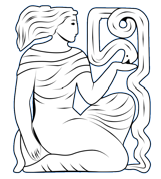| Dr. Claire Chatterton, Open University | The UKAHN Bulletin |
| Volume 7 (1) 2019 | |
 This recently published book is the result of a project initiated by the League of Nurses at the Royal London Hospital. Four members of the league have acted as editors and have brought together oral history interviews with over 85 nurses who trained and worked there and whose experiences span from the 1940s to the 2000s. The youngest was 24 and the oldest was 96. As a former student nurse there myself, I was also one of the interviewees.
This recently published book is the result of a project initiated by the League of Nurses at the Royal London Hospital. Four members of the league have acted as editors and have brought together oral history interviews with over 85 nurses who trained and worked there and whose experiences span from the 1940s to the 2000s. The youngest was 24 and the oldest was 96. As a former student nurse there myself, I was also one of the interviewees.
As the editors remark it is “a treasure chest of recollections which are informative, entertaining, inspiring, enlightening and also the controversial, often challenging the myths and misconceptions that continue to surround nursing today.”
The Royal London Hospital has a long and proud history. Founded in 1740 it has been on its present site in Whitechapel since 1757. Although at the time of its foundation there were five other teaching hospitals in the capital, none served the area east of the city. It has remained in the East End of London ever since, providing health care to a diverse and often impoverished community. Before the NHS it was a voluntary hospital, funded by subscription. Known to generations simply as ‘The London’, it was given its royal status in 1990 to mark the hospital’s 250th anniversary. After the NHS began in 1948, it also incorporated other local hospitals including the former workhouse infirmaries at Mile End and St Clements in Bow plus Bethnal Green and Mildmay Mission hospitals. It also had annexes at Brentwood, Woodford and Banstead. In 2012 it was merged with another London teaching hospital with a long history and its own traditions, St Bartholomew’s (Bart’s), and services are now provided on the same site but in twenty first century buildings.
One of the strengths of this book is that is has woven excerpts from nurses’ memories alongside a discussion of the context in which these nurses were working. It therefore discusses what was happening in the hospital alongside changes in nurse education and the NHS at the time but also in the wider society. This I feel, broadens its appeal. It should not just be of interest to others who trained and worked at the hospital but also to those who are interested in the history of nursing per se. It also usefully reflects on the methods that were utilised in collecting and recording nurses’ oral histories and in choosing which excerpts to use.
It was fascinating to read of the wartime experiences of some of my predecessors working during the Blitz, and the dreadful damage and suffering that war time bombing brought. In addition, the onset of the NHS and the introduction of penicillin were also to herald changes in the role of nurses and the hospital. I also found it equally interesting to read of some of my successors, experiencing ‘Project 2000’ which moved nursing education across the country from hospital schools of nursing into universities and also caring for the more recent victims of bombing in the terror attacks on London on 7th July 2005.
The book also contains some thoughtful discussion about the changing role of the nurse and for me, a message that while so much has changed the essential role of a nurse, to care for people with compassion, remains.
At the Royal College of Nursing’s annual congress last year, I heard the author and nurse, Christie Watson, give an address in which she remarked on the dearth of nurses’ stories, alongside the plethora of doctors whose memories and reflections have become best sellers in recent years. She decided to address this by telling her own story in her book, ‘The Language of Kindness’ and she called on nurses to do the same. It is good to see this book giving a voice to over 85 nurses and their experiences across eight decades.
